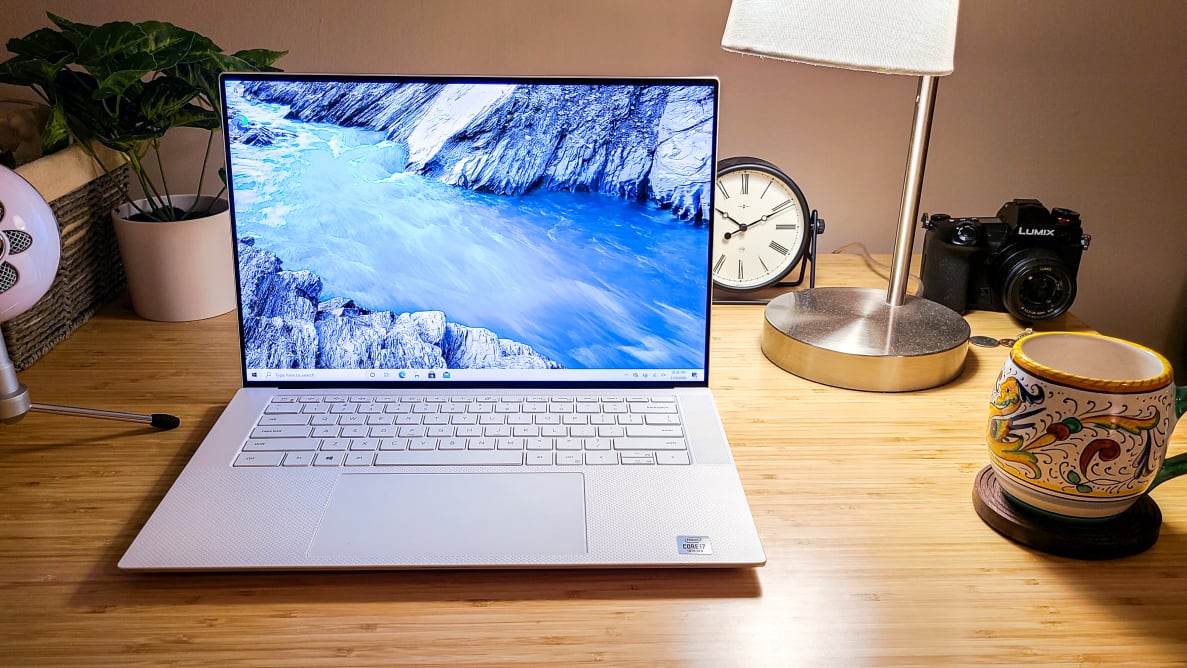Pros
-
High-end performance
-
Good keyboard and trackpad
-
Upgradeable RAM and storage
Cons
-
Gets very hot under heavy usage
-
Limited port selection
-
Mediocre battery life
15-inch laptops tend to favor high-end specs over portability—after all, if you wanted something small and easy to carry, you’d go with a 13-inch model. But the Dell XPS 15 aims to have its cake and eat it too, offering powerful 10th-gen Intel processors and dedicated NVIDIA graphics in an incredibly thin form factor. Using it on a plane may still be a challenge thanks to the 15-inch screen, but carrying it around in your backpack is going to be much more pleasant than many high-power 15-inch notebooks.
We spent several days testing the latest XPS 15, both in the lab and in the real world, to see how it stood up to these lofty standards. Can it match Dell's own class-leading XPS 13 and Apple's superb 15-inch MacBook Pro? We had to find out.
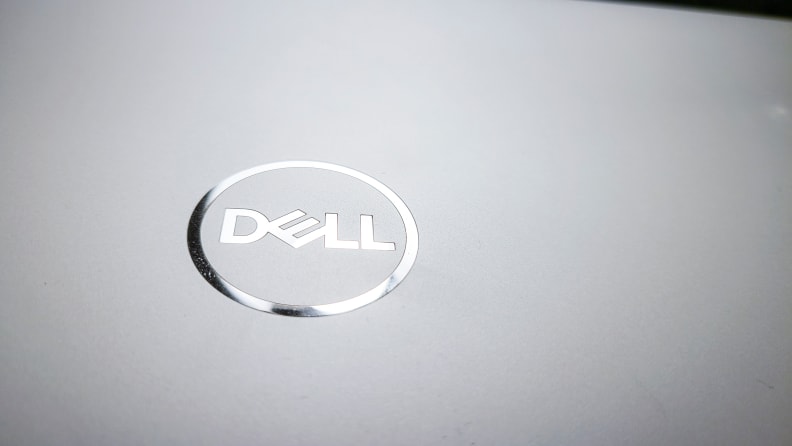
The Dell XPS 15 9500 features elegant little styling details, such as the Dell logo on the hood.
About the Dell XPS 15 9500
As with Dell’s past laptops, the new XPS 15 is available in a number of configurations, either through pre-configured options at retailers like Amazon or through Dell’s custom mix-and-match tool on their site. We tested the high-end model with the following specs:
- Processor: Intel Core i7-10875H (2.3GHz 8-core with up to 5.1GHz Turbo Boost and 16MB cache)
- Memory: 16GB of DDR4-2933MHz RAM
- Storage: 512GB M.2 PCIe NVMe Solid State Drive
- Graphics: NVIDIA GeForce GTX 1650 Ti with 4GB DDR6 VRAM
- Display: 15.6 UHD+ (3840x2400) touchscreen
- Battery: 86Wh 6-cell battery with 130W USB Type-C power adapter
- Ports: USB Type-C (2x Thunderbolt 3, 1x USB 3.2 Gen 2 with DisplayPort), SD card, headphone/microphone jack
- Wi-Fi: Intel Killer Wi-Fi 6 AX1650 (2x2)
- Dimensions: 13.57” x 9.06” x 0.71”, 4.5 lbs
You can, however, step down to an i5-10300H, skip the NVIDIA graphics card, and downgrade the display to a non-touch Full HD+ model (at 1920x1200)—all with a smaller battery and a half-pound reduction in weight. A few of the models even come with Dell’s new Frost White exterior, which looks pretty fantastic.
What We Like
Performance is top notch
Despite its remarkably thin build, the XPS 15 packs in as much high-end hardware as it can. The 8-core, 10th-gen Intel Core i7 in particular will ensure the XPS 15 can handle just about anything you throw at it, from heavy browsing with dozens of tabs to on-the-go video editing. And, while it isn’t really designed to be a gaming machine, the NVIDIA GTX 1650 Ti is powerful enough to handle modern titles at moderate graphical settings. In Shadow of the Tomb Raider, for example, I had to turn the graphics settings to Low in order to hit 60 frames per second for smooth motion. Still, for a non-gaming laptop, that isn’t bad at all, especially if you’re playing slightly older or lower-fidelity games.
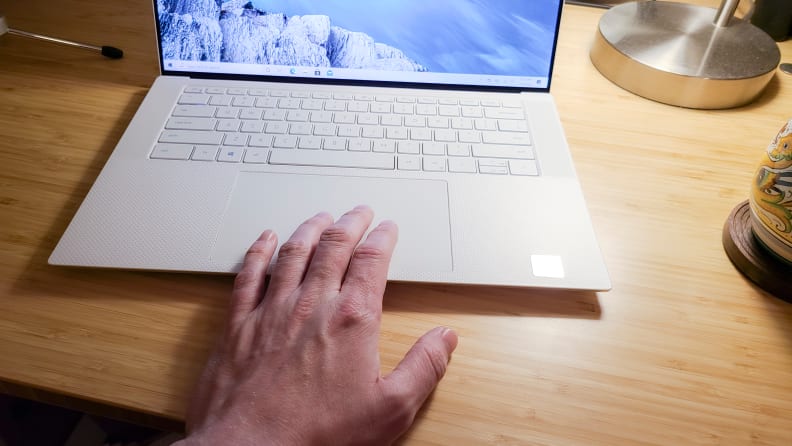
The Dell XPS 15 9500's trackpad is massive, with a smooth surface and excellent responsiveness.
It has a solid keyboard and fantastic trackpad
A laptop’s internal hardware is only half the equation: the trackpad and keyboard can make or break the experience, and thankfully, the XPS 15 is kitted out with a fantastic set. The keyboard is comfortable to type on, with about 1.3mm of key travel—a bit less than the 1.5mm or more I’d like to see, but noticeably deeper than, say, this year’s XPS 13 2-in-1. The sizable legends and adjustable backlight make the keyboard easy to read at day and night, and the 15-inch form factor means you don’t have to sacrifice much in the way of key spacing and layout (though you don’t get a number pad, which is typical in laptops).
Meanwhile, the trackpad continues to be a high point of Dell’s laptops. Dell’s XPS trackpads are some of the only models that can rival Apple’s in smoothness and precision, with a soft click that’s decisive, but quiet enough to avoid annoying your neighbors. This year’s trackpad is also enormous, giving you plenty of space for precise photo edits or comfortable multi-finger gestures. If you haven’t owned a laptop with a trackpad this big before, it may take a bit of getting used to, but you’ll probably come around.
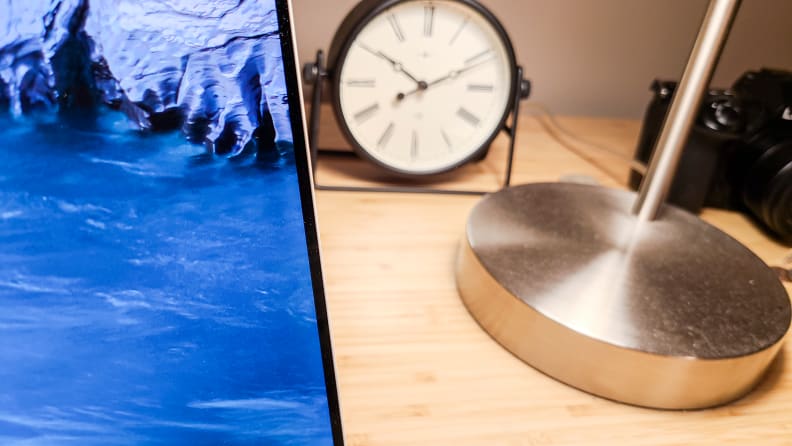
The Dell XPS 15 9500's bezels are razor thin, leaving more space for the display.
The screen is bright and beautiful
While last year’s XPS models—and most other notebooks—sport a 16:9 display, Dell opted to go 16:10 with this year’s XPS 15, adding a bit of vertical real estate so you can fit just a bit more on screen at a time. This is especially useful for web pages and other desktop work, though it does mean there’s no OLED option this year—which is a bummer, given how gorgeous OLED displays can be.
Still, the 4K IPS display Dell offers is incredibly sharp, with vibrant colors and brightness that tops out at 507 nits—which is pretty high for a notebook, and useful if you like to work outside. Contrast ratio measured about 1570:1, which is better than many IPS displays, but nowhere near what you’d find on last year’s OLED models. If you do color-sensitive work, Dell offers different profiles for sRGB, Adobe RGB, and other color spaces in the included PremierColor app, but I’d still recommend calibrating your display if accuracy matters.
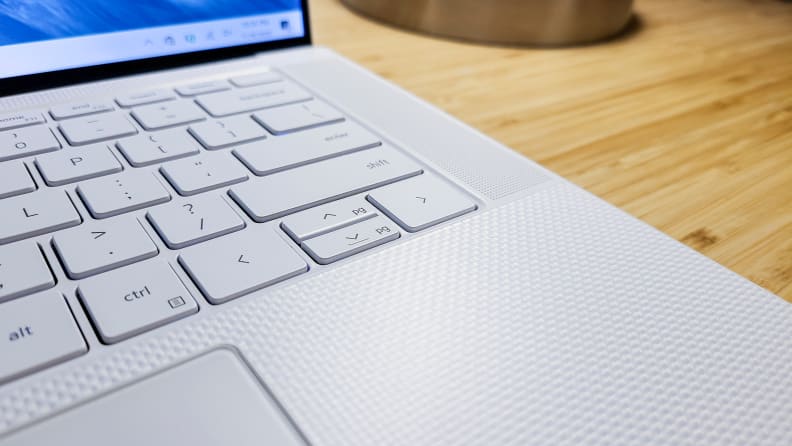
The Dell XPS 15 9500's keyboard has excellent travel, a huge trackpad, and stereo speakers on either side.
RAM and storage are upgradeable for longevity
I love a good thin-and-light laptop, but in order to keep things svelte, manufacturers often solder certain components to the motherboard to save space—meaning you’re stuck with whatever amount of RAM you originally bought the computer with. This keeps the laptop from lasting as long as possible, costing you money and sending more e-waste to the landfill when you need to upgrade.
Thankfully, even with its super-thin form factor, the XPS 15 keeps modular RAM and storage, with two slots for each. That means you can add more memory when the machine starts feeling sluggish a few years down the line, or increase your storage to hold even more data. Sadly, the Wi-Fi chip isn’t upgradeable like it was in the past, but I’ll take what I can get.
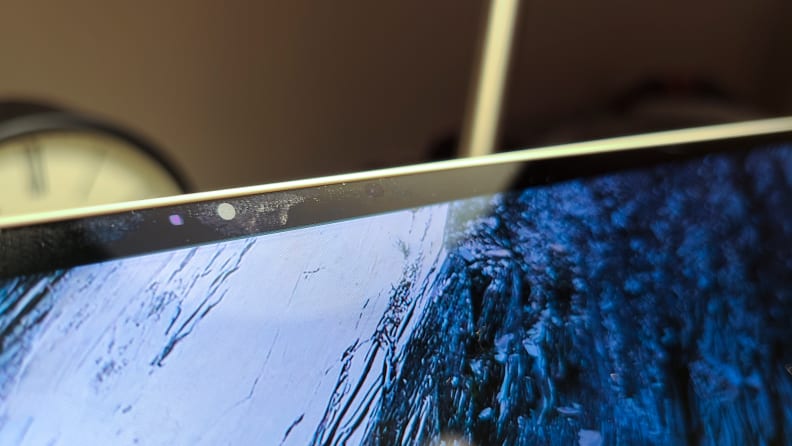
The Dell XPS 15 9500 squeezes a so-so webcam into the top bezel above the display.
What We Don’t Like
It gets very hot
Unfortunately, squishing this much power into a portable form factor does come with downsides, with heat being one of the biggest. The XPS 15 may be able to plow its way through Blender and other resource-hungry programs, but it’ll get really hot doing so—during almost all our benchmarks, the CPU temperature hit the high 90s, with some cores even getting to 100° C—and yes, this was on a flat surface, not my lap. These temperatures not only get the fans screaming loud, but will thermal throttle the CPU to keep things from overheating. Unsurprisingly, the keyboard and bottom case get quite warm to touch, which can be a bit uncomfortable on bare skin.
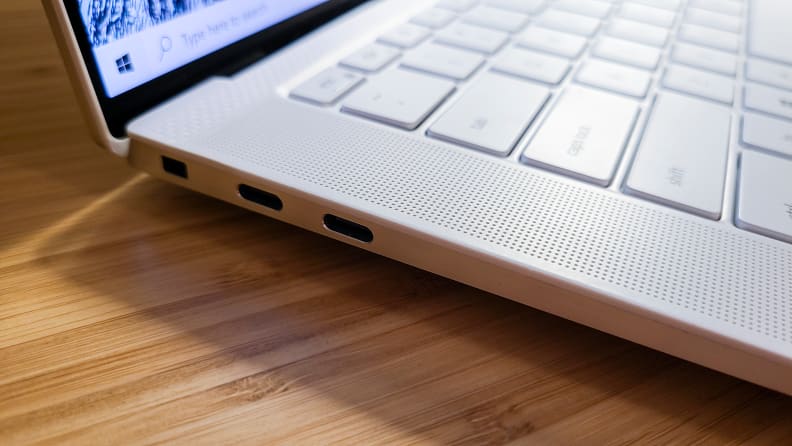
The Dell XPS 15 9500 has two more USB-C ports on the opposite side, as well as a Kensington lock slot.
Ports are limited
Port selection also takes a nosedive in this thinner form factor, with the XPS 15 finally following its smaller sibling. Gone are the USB-A and HDMI ports of last year’s XPS 15: all you have is three USB Type-C ports (two of which support Thunderbolt 3), along with a headphone jack and an SD card slot. If you’re using the laptop in an office environment, those could be very annoying, and futzing with dongles is never an enjoyable experience. On the plus side, the XPS 15 now charges over USB-C, which is convenient if you don’t want to lug multiple chargers around for your phone and laptop.
Battery life is mediocre
Bigger laptops have more room for big batteries, but with a processor this powerful and a screen this sharp, the XPS 15 can also suck down juice pretty quickly. In our battery test, we set the laptop’s brightness to 200 nits (a typical brightness setting for working indoors) and let the laptop automatically cycle through websites in Google Chrome, imitating the average workload a user might put on it day-to-day. The XPS 15 only managed to last six hours and 16 minutes in this test, which is well below the 7-8 hours (or more) we’d like to see—you’ll still probably make it through most of an average workday, but there are plenty of other laptops that can push past this mark, albeit with less powerful specs.
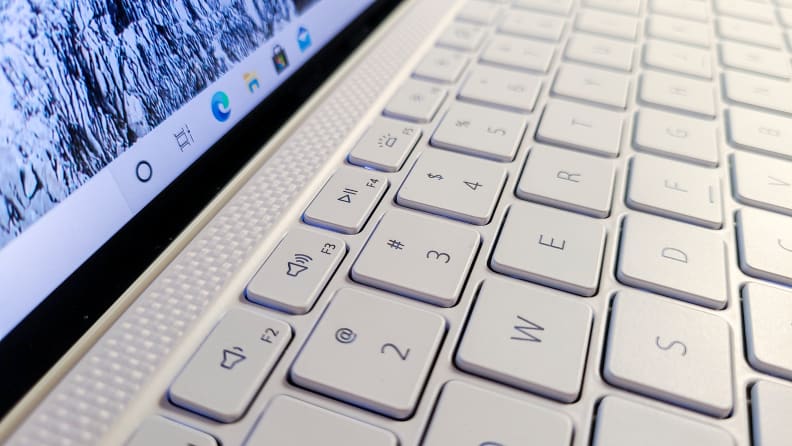
In addition to excellent travel, the Dell XPS 15 9500's keyboard has a backlight—though you'll want to shut it off in bright light.
It’s really expensive
With all of this power crammed into such a small space, you’ve got one of the most premium PCs you can buy—with a price tag to match. Our not-even-fully-loaded version of the XPS 15 costs a whopping $2,349.99, which is a tough pill to swallow. That said, you could easily eschew the UHD+ touch display, which we don’t think is completely necessary at this size, and go with the FHD+ non-touch for $400 less. Backing down to the 6-core processor could save you another $100. So there are more affordable versions of this machine, and for most people, the downgrade in specs won’t likely make a huge difference—especially since that RAM and storage is upgradeable down the line.
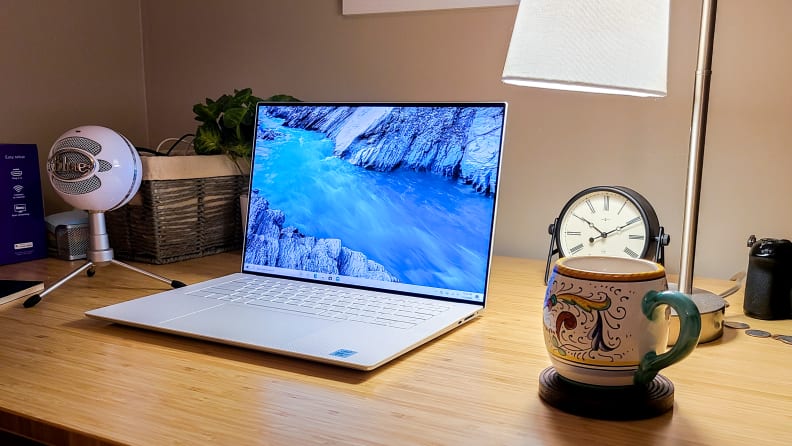
The Dell XPS 15 9500 is a fast, beautiful laptop that has it where it counts.
Should you buy it?
Maybe—it's wonderful, but there are trade-offs to consider
The Dell XPS 15 is a fantastic laptop that can handle 99% of what any typical user would throw at it. It’s powerful, it’s slim for a 15-inch laptop, and the external hardware is of top-notch quality, from the keyboard to the trackpad and the high-res screen. And I didn’t even get to mention the solid speakers, built-in facial recognition and fingerprint reader, or the perfect hinge that opens beautifully with one hand.
That said, the higher-end model we reviewed is rather expensive, and we think many users could probably step down a tier to save some money without noticing a huge difference in performance. I’d recommend going with the the Full HD+ non-touch screen instead of the UHD+ touchscreen, for one, and a six-core processor is probably enough for the majority of users as well.
The most obvious comparison here is the 15-inch Apple MacBook Pro, which is similarly powerful, beautiful, and expensive. We'd give the slight nod to the Dell XPS 15, if only because it's unclear how Apple's roll-out to its own ARM-based processors will work. Even if Apple doesn't update its 15-inch Pro model, the writing will be on the wall, whereas Dell will support this XPS 15 for a long time.
If you like the XPS's look and feel but want to save some money, the HP Envy x360 13t is worth looking at. We reviewed the 13-inch version, but it comes in a 15-inch size as well with better battery life but less powerful (and upgradeable) components. Alternatively, you could look at Dell’s own XPS 13 2-in-1 if you want something a bit smaller, touch-friendly, and a similar design to the XPS 15.
If you need a big screen and lots of raw power, though, the XPS 15 is simply one of the best laptops in its class.
Meet the tester

Whitson Gordon
Freelance Writer
Whitson Gordon is a valued contributor to the Reviewed.com family of sites.
Checking our work.
Our team is here to help you buy the best stuff and love what you own. Our writers, editors, and experts obsess over the products we cover to make sure you're confident and satisfied. Have a different opinion about something we recommend? Email us and we'll compare notes.
Shoot us an email
